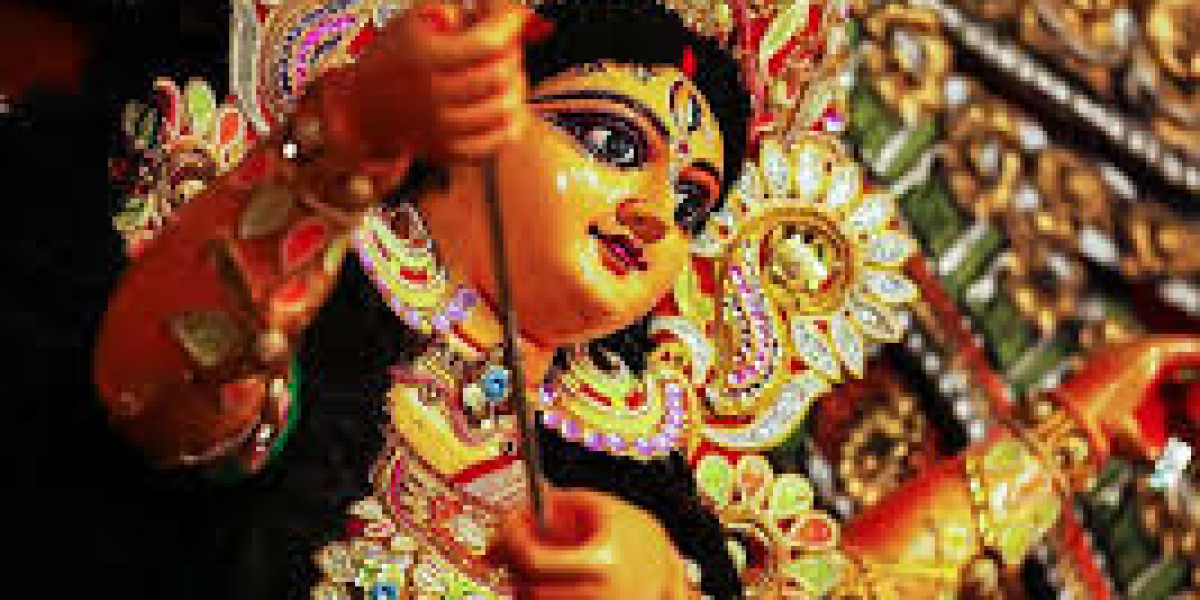Durga Puja, one of the most significant Hindu festivals, celebrates the triumph of Goddess Durga over the buffalo demon Mahishasura, symbolizing the victory of good over evil. This vibrant festival is marked by grand celebrations, elaborate rituals, and the reverence of the Goddess in her various forms. Central to these rituals is the proper collection and use of Durga Puja Samagri (worship materials), which holds immense significance in invoking the Goddess’s blessings.
To conduct Durga Puja in its truest essence, it’s crucial to gather all the essential items in advance. This guide presents a detailed list of the key samagri required for Durga Puja, helping devotees perform the rituals with devotion and accuracy.
1. The Importance of Durga Puja Samagri
Samagri refers to the items required to conduct the rituals and offerings during Durga Puja. Each item in the puja samagri list has its spiritual and symbolic significance, representing various elements of nature and devotion to the Goddess. The completeness of the samagri is believed to enhance the effectiveness of the puja, bringing prosperity, health, and protection from evil forces to the devotees.
2. The Complete Durga Puja Samagri List
a. Kalash (Holy Pot) and Associated Items
The Kalash, a sacred water pot, is an essential part of Durga Puja. It symbolizes the universe and is believed to be the seat of the Goddess during the rituals.
- Kalash: A copper or silver pot filled with clean water and topped with mango leaves and a coconut. A swastika is usually drawn on the pot with vermillion paste.
- Mango Leaves: Used to decorate the Kalash. They represent nature's bounty and the divine connection with the Goddess.
- Coconut: Placed on top of the Kalash, symbolizing fertility, prosperity, and the presence of the Goddess.
b. Flowers and Garlands
Flowers are offerings of beauty and purity to the Goddess, symbolizing devotion and the blossoming of the soul.
- Marigold, Jasmine, and Lotus: These are preferred flowers for Durga Puja, each holding a unique spiritual significance.
- Flower Garlands: Garlands made of flowers and leaves are used to adorn the Goddess’s idol and the puja space.
- Bel (Bilva) Leaves: Essential in the worship of Goddess Durga, especially during the "Ashtami" day of Navratri.
c. Puja Essentials and Offerings
These items form the core of the rituals, each contributing to the puja’s sanctity.
- Incense Sticks (Agarbatti) and Dhoop: Used for purifying the surroundings and creating a fragrant atmosphere conducive to worship.
- Camphor (Kapoor): Burned during the aarti to remove negativity and bring in positive energy.
- Ghee Lamp (Diya): Lighting the diya represents the presence of divine light dispelling darkness.
- Vermilion (Sindoor) and Turmeric (Haldi): Essential for decorating the idol and applying to the forehead of the devotees, symbolizing purity and protection.
- Rice (Akshat): Unbroken rice grains mixed with turmeric are offer as a sign of completeness and prosperity.
- Panchamrit: A sacred mixture of milk, curd, honey, sugar, and ghee, used to bathe the Goddess’s idol during the ritual.
- Sandalwood Paste (Chandan): Used for marking the forehead of the deity and devotees, representing purity and divine fragrance.
d. Fruits, Sweets, and Food Offerings (Naivedya)
Offering food items to the Goddess is a crucial aspect of Durga Puja, symbolizing gratitude and sharing nature's bounty.
- Fruits: Seasonal fruits such as bananas, apples, pomegranates, and coconuts are commonly used. They represent nature's abundance and the devotee’s willingness to offer the best to the Goddess.
- Sweets (Mithai): Traditional sweets like ladoo, peda, and barfi are offered to the Goddess as naivedya. They are believed to bring sweetness and joy into the devotee's life.
- Rice: Raw rice is use in rituals, while cooked rice or kheer (sweet rice pudding) is offere as part of the bhog (food offering).
- Paan (Betel Leaves) and Supari (Betel Nuts): Offered to the Goddess as part of the completion of the ritual, symbolizing hospitality and respect.
e. Clothing and Decoration Items
Dressing and decorating the idol is a way to honor the Goddess, showcasing reverence and devotion.
- Red Cloth (Chunari): A piece of red cloth is offer to the Goddess, as red is consider her auspicious color, symbolizing strength and power.
- Ornaments and Jewelry: If performing Durga Puja Samagri at home, devotees often adorn the idol with ornaments and jewelry to express their love and devotion.
- Fresh Flowers and Garland: Used to decorate the idol and the puja area, enhancing the festive and divine atmosphere.
f. Ritual Tools and Utensils
Specific tools and utensils are necessary for conducting the rituals smoothly.
- Puja Thali: A metal plate used to arrange the various items like vermilion, turmeric, rice, flowers, and diyas during the rituals.
- Conch (Shankh): Blowing the conch marks the beginning of the puja and is believe to purify the environment and invoke positive energies.
- Bell (Ghanti): Ringing the bell during aarti and other rituals creates a sacred sound that attracts divine energies and dispels negativity.
- Aarti Lamp: A multi-wick lamp used during the aarti to worship the Goddess with light and devotion.
g. Sacred Texts and Books
Reading and chanting from sacred texts is an integral part of Durga Puja, connecting devotees with the divine.
- Durga Saptashati: A sacred text consisting of 700 verses, narrating the deeds of Goddess Durga. Reciting these verses during the puja is believe to invoke the Goddess’s blessings.
- Devi Mahatmyam: Another important scripture used in the worship of Goddess Durga, detailing her divine qualities and victories.
3. Preparing the Puja Space
Setting up a clean and sacred space is the first step before commencing Durga Puja. The space is decorate with flowers, rangoli (decorative patterns made with colored powders), and lamps. The idol or picture of Goddess Durga is place on a raised platform, adorned with flowers and garlands. The Kalash is place near the idol as a symbol of auspiciousness.
4. The Rituals: Step-by-Step Puja Process
Once all the samagri is ready, the Durga Puja begins with the invocation of the Goddess, chanting of mantras, and offering the collected items with utmost devotion. The puja involves:
- Kalash Sthapana: Placing the sacred pot as the seat of the Goddess.
- Sankalpa: Making a vow to conduct the puja with sincerity.
- Puja Offerings: Offering flowers, fruits, sweets, incense, and light to the Goddess.
- Aarti: Waving the aarti lamp in front of the idol while singing devotional songs.
- Prasad Distribution: Distributing the food offerings to family and friends after the completion of the puja.
5. Conclusion: The Spirit of Durga Puja
Durga Puja is not just a ritual; it is an expression of faith, devotion, and cultural richness. By gathering and using the complete Durga Puja Samagri, devotees not only honor the Goddess but also invite her divine presence into their lives. This ritualistic preparation fosters a deep connection with the divine, filling the environment with positivity, peace, and spiritual energy.
As you prepare for this sacred festival, ensuring that all these essential items are included will enhance your worship experience, bringing joy, prosperity, and the blessings of Goddess Durga into your home.








